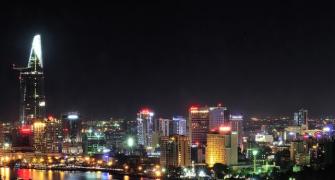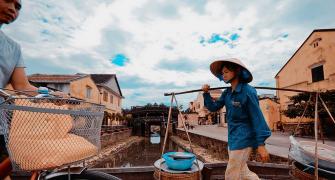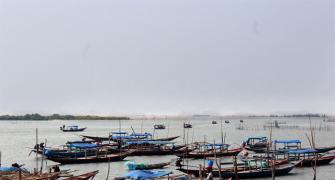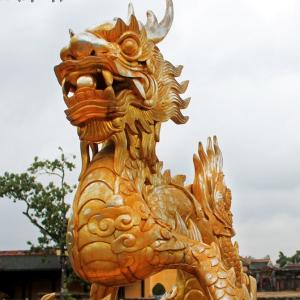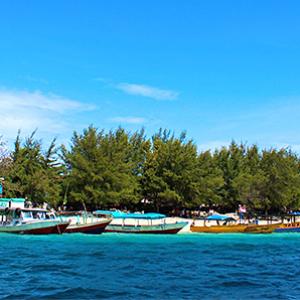Geetanjali Krishna is amazed at the resilience of a country that has emerged from war to transform itself into one of the world's best sourcing hubs and a sparkling tourist destination to boot.

Photograph: Kham/Reuters.
Cup of coffee in hand, I follow the strains of Paganini coming from the opera house.
Nguyen Hue, the broad boulevard I'm on, stretches from City Hall, an opulent French-style building, on one end to a high-end shopping street reminiscent of the Champs-Élysées on the other. I could be in any European capital right now, I muse.
Just then, the traffic light turns green and it begins to rain. Conical bamboo hats suddenly appear on the heads of two-wheeler riders, who engulf the boulevard like a fume-ridden wave of locusts. The resemblance to Western cities fades and Ho Chi Minh City reveals itself to me in a burst of Eastern colour and flavour.
Soon after, I'm at the desk of the hotel concierge, map in hand and wondering which direction to walk in.
She recommends the War Remnants Museum.
'Is it about the Vietnam war?' I ask.
Without losing her perfect smile (the Vietnamese are some of the politest people I've met) she corrects me: 'The American war, you mean...'
The walk turns out to be an adventure in itself. In HCMC, better known as Saigon, the pavement ambler must always look out for two-wheelers, which move at top speed and from all directions on its broad pavements.
I pass a school, and find that pavement life is more chaotic there. Vendors sell street food, two-wheelers park cheek-by-jowl on the pavement waiting for children to emerge from the gates and the motorbike taxis make it impossible for pedestrians to walk past.
Eventually, I eschew the pavement for the road, and feel better off.
The garden of the War Remnants Museum is scattered with American tanks and aircraft, while Harry Belafonte's lilting holiday songs play incongruously inside.
The ground floor is a photo gallery of protests across the world against the American aggression in Vietnam.
The first and second floors, with their exhibits of photographs, battle memorabilia and personal accounts, paint a terrifying picture of a small, agrarian nation that was subjected to savage wartime experiments with chemical weapons, such as Agent Orange, by the US.
An ongoing exhibition on war correspondents from across the world who lost their lives in Vietnam vividly brings to life the pointless 17-year war that almost destroyed this country.
I emerge from the museum, shaken to the core, but also amazed at the resilience of a country that has emerged from the aftermath of war to transform itself into one of the world's best sourcing hubs and a sparkling tourist destination to boot.
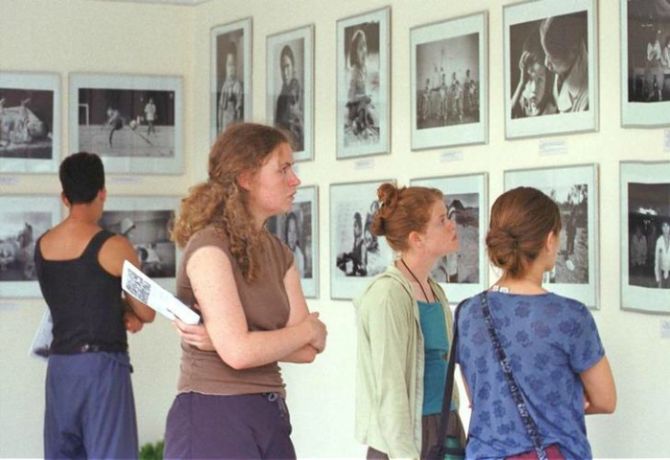
Museum in Ho Chi Minh City.
The museum paints a terrifying picture of a small, agrarian nation that was subjected to savage wartime experiments with chemical weapons, such as Agent Orange, by the US.
Don't miss: Inside Vietnam's extraordinary underground military base
Photograph: Rathavary Duong/Reuters.
As I walk to its bustling Ben Thanh Market on Le Loi street, crammed with vendors selling wooden lacquer handicraft, cotton and silk fabrics as well as export seconds, I spot several boutiques (the Ginkgo concept store particularly stands out) with exquisite handmade products.
Vietnam has also emerged as the world's second-largest coffee producer, after Brazil. I make several pit stops in its many coffee shops for ca phe sua, coffee with condensed milk. It is aromatic and sweet, and packs a superb caffeine kick. The Vietnamese brew it in filters, phins, which sit atop one's cup (or a glass, if you prefer it iced).
One of the coffee chains all over Saigon is called Phuc Long. While it is somewhat unfortunately named, the taste of its ca phe sua will linger on my palate for a long time.
My tryst with Vietnamese history isn't over yet.
At the ramshackle Museum of Fine Arts, I'm moved to see that wartime scenes are a recurring theme. From pen-and-ink sketches of surgeons performing complicated operations on the battlefield to watercolours of lovely green rice paddies, which, on closer inspection, provide camouflage for soldiers -- modern art in Vietnam seems preoccupied by the war that many still remember vividly.
As my sojourn in Saigon draws to an end, my suitcase fills up with frangipani candles, kilos of coffee and several phins that I swear I'll use back home.
Moreover, I'm carrying back a renewed sense of optimism. The Vietnamese have survived prolonged war, ruination of forest resources and exposure to carcinogens and mutagens that have affected their next few generations.
Bombs, carcinogens and environmental disasters are a way of life today and hopefully, like the Vietnamese, we too will survive them to see a better day.
Getting around
One-stop flights between India and Vietnam are available from 10 carriers including Thai, Emirates and Singapore Airlines.
The metro is under construction in Ho Chi Minh City and taxis (both car and motorcycle) are inexpensive and plentiful.


